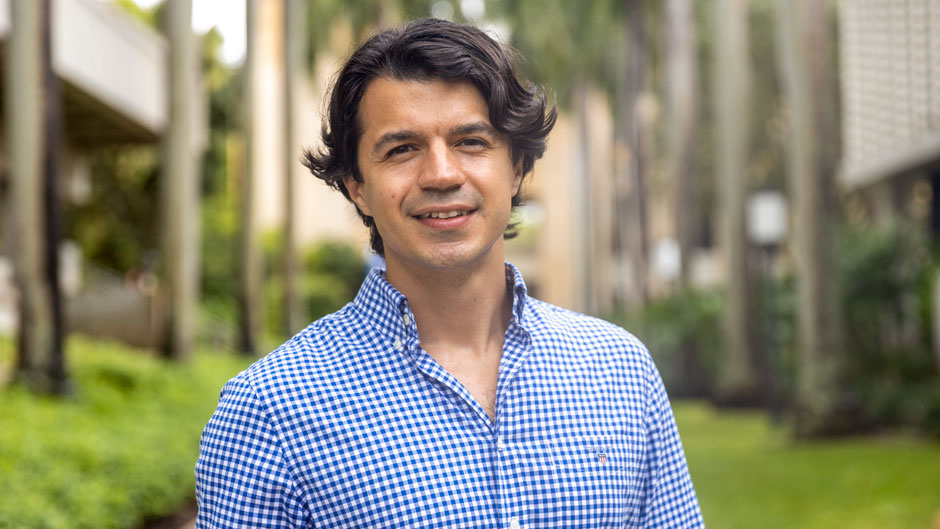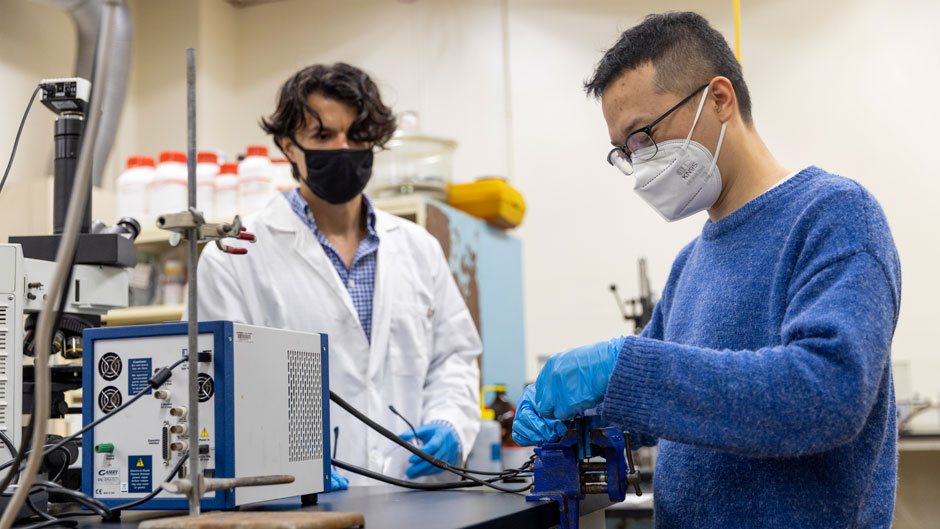They call it “white gold,” “21st century oil,” and “star mineral.”
But whatever name is attached to it, lithium—vital for batteries that power electric cars, smartphones, and computer electronics—is in hot demand.
The metal, however, is not easy to mine, requiring costly, time-consuming, and environmentally unfriendly methods to produce.
Mert Akin, a mechanical engineering graduate assistant at the University of Miami, has a solution. Recently, in the Materials Lab at the College of Engineering, he repeated his novel technique for extracting lithium from geothermal brines.
And just like before, when he tested his method under the close observation of faculty mentors, the procedure worked flawlessly, producing a lithium sample nearly free of impurities in just under two hours—a drastic reduction from the 18 hours it usually takes to extract the metal.
While Akin’s breakthrough method may not have generated any hype or headlines, it has the potential to change the way renewable energy companies drill for lithium and, more importantly, reduce the United States’ dependency on foreign sources of the material.
Most of the lithium in the world is extracted from mineral-rich brines, heated fluids found in rocks deep within the Earth’s crust.
“The conventional way of getting to it involves a process of drilling down and then pumping the brine up into solar evaporation ponds, where it actually sits for a year and a half,” said Akin, a mechanical engineering Ph.D. candidate.

But such a method, he noted, is bad for the environment, contaminating the soil and consuming excessive amounts of water. “It takes the capacity of the UC Pool to produce just one ton of lithium,” said Akin, referring to the Olympic-sized swimming pool on the University’s Coral Gables Campus.
Akin’s electrochemical technique directly extracts the lithium, eliminating the lengthy solar evaporation process and producing purer lithium free of sodium, potassium, and the other impurities that are typically found in lithium recovered via conventional mining methods.
“Our method extracts 90 percent purer lithium, and the cost for extracting that lithium is significantly reduced, from $5 per kilogram of lithium to about $1 per kilogram,” Akin said.
Akin’s project, developed under the supervision of College of Engineering professors Xiangyang Zhou and Hongtan Liu, is a semifinalist in the U.S. Department of Energy’s American-Made Geothermal Lithium Extraction Prize.
As one of 15 semifinalists, the team is awarded $40,000 and moves on to Phase 2. Five finalists from that phase will receive $280,000 each and fabricate and test their designs for Phase 3. Three winners will split $2 million in the $4 million competition designed to advance technologies and techniques to support direct lithium extraction from geothermal brines.
As automobile manufacturers ramp up production of pure electric models and as more utility companies merge lithium-ion batteries into their power systems, the global demand for lithium is expected to increase exponentially over the next few years. General Motors, for example, plans to introduce 30 electric models by the year 2025 and to stop selling gas-powered automobiles 10 years after that.
“So, the demand will only skyrocket,” Akin said.
But the United States may have a problem satisfying that demand. The only operational lithium mine in the U.S. is in Nevada, with most of the lithium used domestically originating from Latin America and Australia.
“We’ve got our eye on the Salton Sea, though,” said Akin, referring to the landlocked saline body of water in southern California that contains some of the world’s largest lithium deposits.
He hopes his groundbreaking technique—which has only been tested under simulated conditions in the lab and requires more experimentation, possibly in the field—will eventually become the blueprint for lithium-extraction methods.

